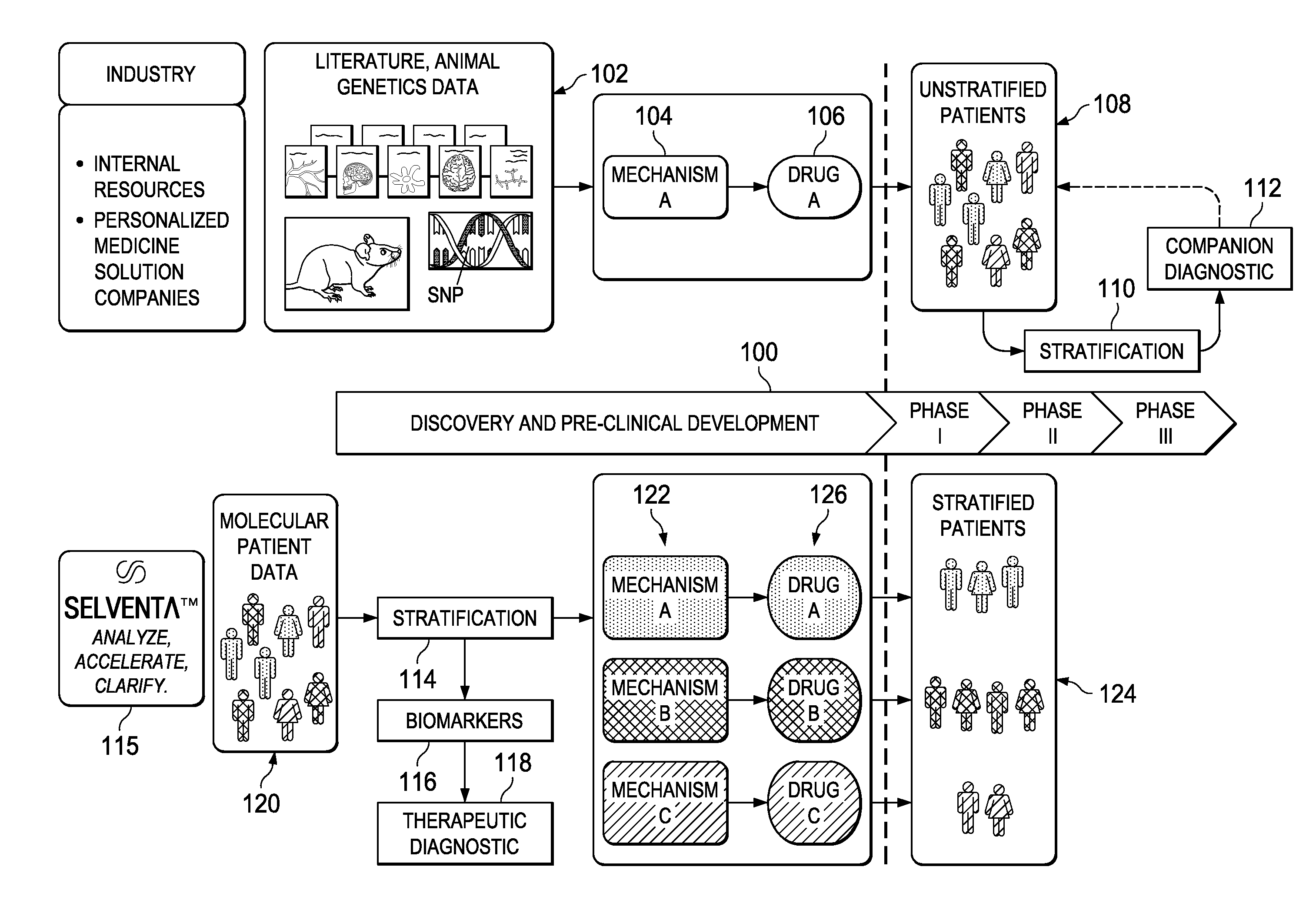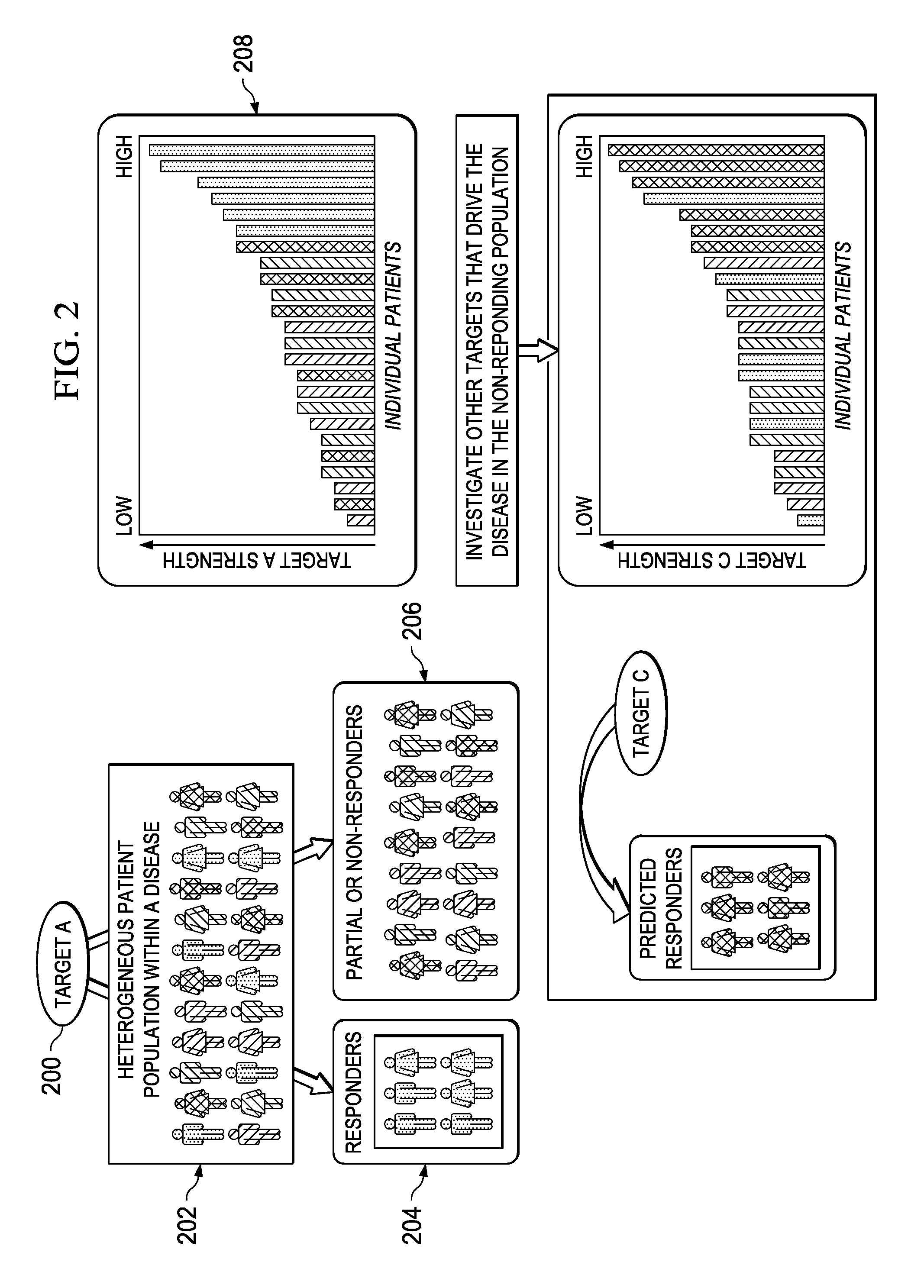Stratifying patient populations through characterization of disease-driving signaling
a technology of disease-driving signaling and patient populations, applied in the field of stratifying patient populations through characterization of disease-driving signaling, can solve the problems of long drug discovery paradigm, high failure rate, and high cost (at least $800 million) of new therapies, and achieves improved translatability, improved success rate, and better in-depth understanding
- Summary
- Abstract
- Description
- Claims
- Application Information
AI Technical Summary
Benefits of technology
Problems solved by technology
Method used
Image
Examples
Embodiment Construction
[0022]FIG. 1 represents a schematic representation of the current paradigm in the pharmaceutical industry versus the approach of this disclosure, which implements early (i.e. pre-clinical trial) application of signaling-driving mechanisms and biomarker identification. The top portion of the drawing illustrates the conventional approach and the associated timeline 100 that begins with discovery and pre-clinical development. As is well-known conventional drug discovery starts with preclinical research, in which the main goals are to identify candidate targets for a given disease area, develop compounds or antibodies that manipulate these targets, and assess their safety and efficacy in-vitro and in animal models. As indicated at 102, candidate targets are most commonly identified through the mining of current, peer-reviewed literature on the disease and original research in animal models of that human disease. From that work, a mechanism 104 is identified. Frequently, the drug target ...
PUM
 Login to View More
Login to View More Abstract
Description
Claims
Application Information
 Login to View More
Login to View More - R&D
- Intellectual Property
- Life Sciences
- Materials
- Tech Scout
- Unparalleled Data Quality
- Higher Quality Content
- 60% Fewer Hallucinations
Browse by: Latest US Patents, China's latest patents, Technical Efficacy Thesaurus, Application Domain, Technology Topic, Popular Technical Reports.
© 2025 PatSnap. All rights reserved.Legal|Privacy policy|Modern Slavery Act Transparency Statement|Sitemap|About US| Contact US: help@patsnap.com



